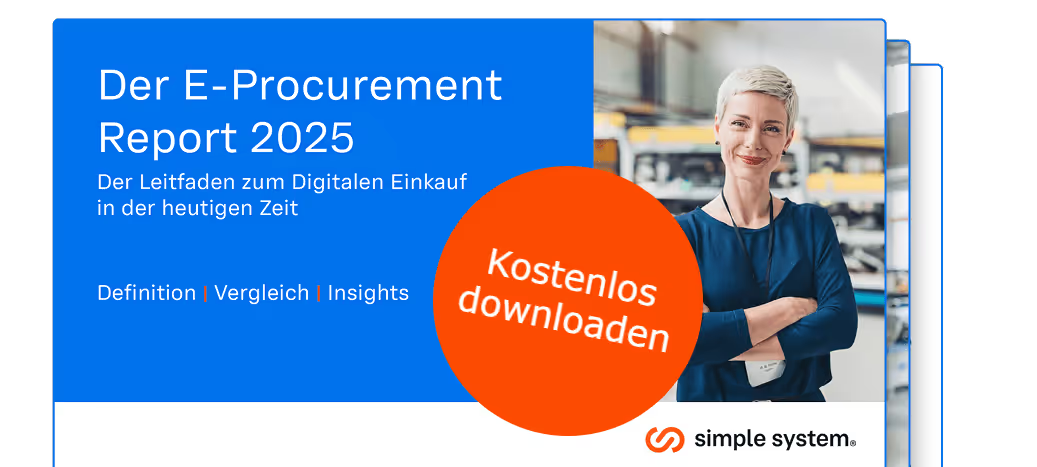In this article, we will take a closer look at the definition, differentiation and examples of purchasing and procurement logistics in order to gain a better understanding of its significance and role in a corporate context.
Purchasing and Procurement Logistics - Definition, Differentiation, Examples
Purchasing and Procurement Logistics are two inseparable concepts in the area of business processes and the value chain. In today's competitive business environment, the effective and efficient procurement of materials, products, and services is critical to a company's success. But what exactly is behind these terms?
Definition of Procurement Logistics

Procurement Logistics comprises all processes and measures that are necessary to ensure a smooth supply of materials, goods and services to a company. In other words, it is about making sure that All required resources are available on time and in the right quantity stood.
This includes the planning, management and control of all activities related to the purchase of raw materials, semi-finished products and supply components. Suppliers are also selected and evaluated and contracts and conditions are negotiated. Procurement logistics is also a central part of the entire procurement process.
Purchasing and Procurement — a Distinction
With the terms purchasing and Procurement There is often uncertainty in their correct use and they are mixed wildly - sometimes even by experts. In fact, procurement can be interpreted quite differently. In principle, however, it should be noted that purchasing is part of procurement. Procurement is, so to speak, the umbrella term for purchasing and procurement logistics.
Difference between logistics and procurement logistics
While logistics controls the entire flow of materials and goods from receipt of goods to delivery, procurement logistics focuses on procurement and the internal material flow. Logistics therefore comprises the entire organization of warehousing, transportation and distribution of goods, while procurement logistics focuses specifically on the procurement of materials and the internal transport and storage of these materials.
Procurement logistics is essentially a sub-area of general logistics, which focuses on the specific tasks of procurement and internal material flow.
Procurement logistics tasks

Procurement Logistics comprises the planning, management and control of all processes related to the purchase of goods and services. This also includes the Material procurement, supplier selection, cost and performance tracking, procurement market research, as well as ensuring quality and quantity of the goods delivered. This ensures that all required resources are available on time and in the right quantity.
An important task of procurement logistics is to Need for materials and resources to determine and place orders accordingly. Efficient communication with suppliers and a precise needs analysis play a decisive role here. Through a precise planning and control In the ordering processes, bottlenecks can be avoided and costs reduced.
Procurement Logistics also selects suppliers and negotiates prices, conditions and delivery times. It is important to establish long-term partnerships with suppliers to ensure a stable supply chain.
Procurement Logistics also monitors supply chains to ensure that the ordered goods are delivered on time and in the desired quality. Close cooperation with suppliers and regular quality controls play a decisive role in this.
Efficient Procurement Logistics therefore contributes to Efficiency and Competitiveness of a company at.
Objectives of Procurement Logistics
The objectives of procurement logistics are diverse and serve to Purchasing process to optimize and ensure a smooth flow of materials. Another goal is to ensure high product quality by selecting suitable suppliers and carrying out quality controls. Cost reduction through efficient procurement management Is also a central goal. The aim is to design processes in such a way that costs are reduced and bottlenecks are avoided.
But environmental aspects such as sustainable procurement and waste prevention are also important aspects that are taken into account in procurement logistics goals. By implementing these goals, a company can improve efficiency and competitiveness while promoting sustainable practices.
Key Figures of Procurement Logistics
[The 3 key figures here and/or the 3 sourcing terms afterwards can easily be converted into an infographic]
Procurement logistics indicators are quantifiable measures that are used to evaluate the performance and efficiency of procurement logistics.
- An important key figure in procurement logistics is Supplier evaluation, which measures the quality and reliability of suppliers. By carefully analyzing and evaluating suppliers, a company can ensure that only the best partners are selected.
- Another important key figure is Turnaround time, which indicates how long it takes for a product to reach the customer from purchase to delivery. A short turnaround time is crucial to meet customer requirements quickly and avoid bottlenecks.
- Die Inventory Rotation Is another important key figure that shows how often inventory changes within a specific period of time. A high inventory rotation means that inventory is used efficiently and bottlenecks are avoided.
Sourcing, single sourcing and modular sourcing
- Sourcing Means the selection and purchase of suppliers for required goods and services. This also includes drafting supplier relationships and contracts.
- At Single sourcing A company obtains a specific good or service from just one supplier. This offers opportunities, but also risks in terms of supplier dependency.
- Modular sourcing Refers to a procurement strategy in which individual modules of a product or service are purchased separately from different suppliers in order to achieve flexibility and quality improvements.
What role does purchasing play in procurement logistics?
Purchasing plays an important role in procurement logistics, as it is responsible for the procurement of goods and services. By carefully selecting suppliers and negotiating contracts, purchasing helps to optimize the procurement process. As a result, not only Costs are reduced But the quality of the products or services purchased can also be improved.
Purchasing also has a direct impact on the supply chain, as it ensures that the right quantities are delivered at the right time. Efficient and well-organized procurement logistics is therefore crucial for the smooth running of the entire procurement process and contributes to a company's efficiency and competitiveness.
Ways to optimize purchasing
One way to optimize purchasing is to work closely with suppliers to jointly improve processes and reduce costs. By sharing information and identifying bottlenecks, bottlenecks can be avoided and more efficient processes can be created. In addition, suppliers can bring valuable insights and expertise to their production processes to ensure higher quality. These partnerships can help make Procurement Logistics “smooother” and more effective.
Die Implementation of a supplier evaluation system Is another important measure for optimising purchasing. By regularly checking the performance of suppliers, a company can ensure quality and reliability. Search an evaluation system makes it possible to set KPIs and other measurable factors in order to assess the performance of suppliers. Adjustments can be made as needed to ensure that only the best and most reliable suppliers are selected.
Another way to optimize the procurement process is to use Technologies such as e-procurement. By using a Electronic Procurement Platform Companies can automate the ordering process, reduce time and minimize the error rate.
Use of e-procurement in procurement logistics
e-Procurement refers to the electronic purchase of goods and services via the Internet or other digital platforms. The use of e-procurement offers advantages such as Faster order processing, transparency in prices and availability, and reduced risk of errors. By automating the ordering process, time savings can be achieved and administrative tasks reduced. Die online procurement It also enables better integration between companies and suppliers, resulting in an optimized supply chain. By using this technological solution, purchasing can be made more efficient and the material flow can be optimized.
The implementation of a Electronic Procurement Platform Offers companies the opportunity to simplify the purchasing process and save costs. With real-time information on prices, availability and product quality, well-founded decisions can be made and the procurement process improved. This automation enables companies to reduce time spent while ensuring that the goods and services they need are available at the right time and in the right quantity.
In addition, e-procurement enables closer cooperation between companies and suppliers, resulting in a seamless exchange of information and a more efficient supply chain. Through this integration, bottlenecks can be avoided and optimized processes can be created. Overall, the use of e-procurement An effective way to optimize purchasing and thus increase a company's efficiency and competitiveness. This is particularly important in today's fast-paced and digitalized business world.
Conclusion
In summary, optimizing procurement and supply chain processes is essential for companies to remain competitive in today's fast-paced and digitalized world. Through effective strategies such as information sharing, partnerships with suppliers, technology implementation such as e-procurement, supplier evaluation systems, and negotiation techniques, companies can improve the efficiency of their procurement logistics. These measures not only help streamline processes, but also ensure a stable supply chain, minimize costs and increase the company's overall competitiveness.

Einkaufen & sparen
Erfahren Sie, wie es geht, in unserem kostenlosen E-Procurement-Report. Jetzt kostenlos und unverbindlich herunterladen.
Jetzt lesen








